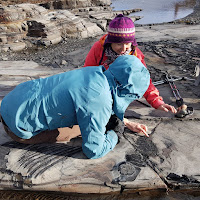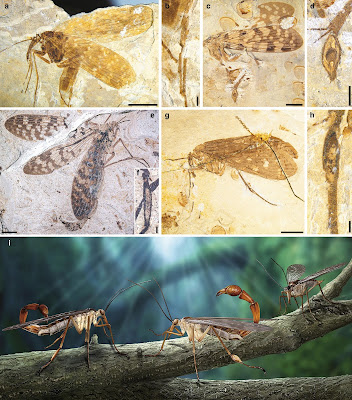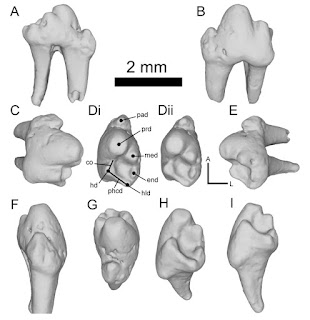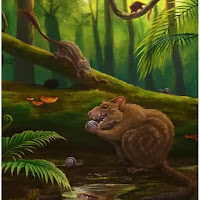 |
| Huadanosaurus sinensis gen. et sp. nov. and Sinosauropteryx lingyuanensis sp. nov. Qiu, Wang, Jiang, Meng & Zhou, 2025 illustrated by ZHAO Chuang facebook.com/PNSOus |
ABSTRACT
The Compsognathidae was originally considered an early-diverging clade of coelurosaur theropods. However, recent study suggests that Compsognathidae is not monophyletic. Here, we describe two new compsognathid-like species, Sinosauropteryx lingyuanensis sp. nov. and Huadanosaurus sinensis gen. et sp. nov. from the Lower Cretaceous Yixian Formation of Dawangzhangzi (Lingyuan, Western Liaoning, China). The phylogenetic results indicate that all compsognathid-like theropods from the Early Cretaceous Jehol Biota form a monophyletic group Sinosauropterygidae nested among early-diverging coelurosaurs. Morphological comparison between various species of sinosauropterygids from the Early Cretaceous of Northeast China, combined with the phylogenetic results, suggests that at least three distinct hunting strategies were present among coeval species. The diversification of theropods should be attributed to the landscape caused by the destruction of the North China craton.
Early Cretaceous, Jehol Biota, Yixian Formation, Sinosauropterygidae, North China craton
Dinosauria Owen, 1842
Saurischia Seeley, 1888
Theropoda Marsh, 1881
Coelurosauria Von Huene, 1914
Sinosauropterygidae Ji et Ji, 1996
Sinosauropteryx Ji et Ji, 1996
Sinosauropteryx lingyuanensis sp. nov
Diagnosis. Differs from other sinosauropterygids in possessing the following autapomorphies: the jugal ramus of the maxilla subequal to the length of the snout; maxilla relatively low and elongated, maxillary fenestra large and subequal in size to the external naris; absence of the ischiatic boot.
Huadanosaurus sinensis gen. et sp. nov.
Diagnosis. Differs from other sinosauropterygids in possessing the following autapomorphies: large oval concavity between the anterior margin of the antorbital fossa and the maxilla; large lacrimal recess on the lacrimal, U-shaped bifurcation at the posteroventral margin of the dentary, small and crescent-shaped external mandibular fenestra, fanshaped neural spine on the axis, strongly anteroposteriorly elongated centrum in the posterior cervical vertebrae, small pleurocoel on centrum of the anterior dorsal vertebrae, the coracoid elongated lateromedially, not oval-shaped, the supracetabular crest well developed on the ilium, the obturator process >70% of the length of the ischial shaft, and the tibia ∼1.3 times of the femoral length.
Etymology. ‘Huadan’, a Chinese word meaning the birthday of a great person or a great institution, commemorating the 75th anniversary of the founding of the People’s Republic of China and the Chinese Academy of Sciences, the 95th anniversary of the founding of the Palaeontological Society of China and the Institute of Vertebrate Paleontology and Paleoanthropology, Chinese Academy of Sciences, and the 40th anniversary of the founding of the Chinese Society of Vertebrate Paleontology; ‘saurus’, Greek for lizard. ‘sine’, Latin referring to China.
 |
| Huadanosaurus sinensis (left) and Sinosauropteryx lingyuanensis (right) illustrated by ZHAO Chuang |
Rui Qiu, Xiaolin Wang, Shunxing Jiang, Jin Meng and Zhonghe Zhou. 2025. Two New compsognathid-like Theropods show diversified predation strategies in theropod dinosaurs. National Science Review, Volume 12(5); nwaf068. DOI: doi.org/10.1093/nsr/nwaf068 [22 February 2025]
















































